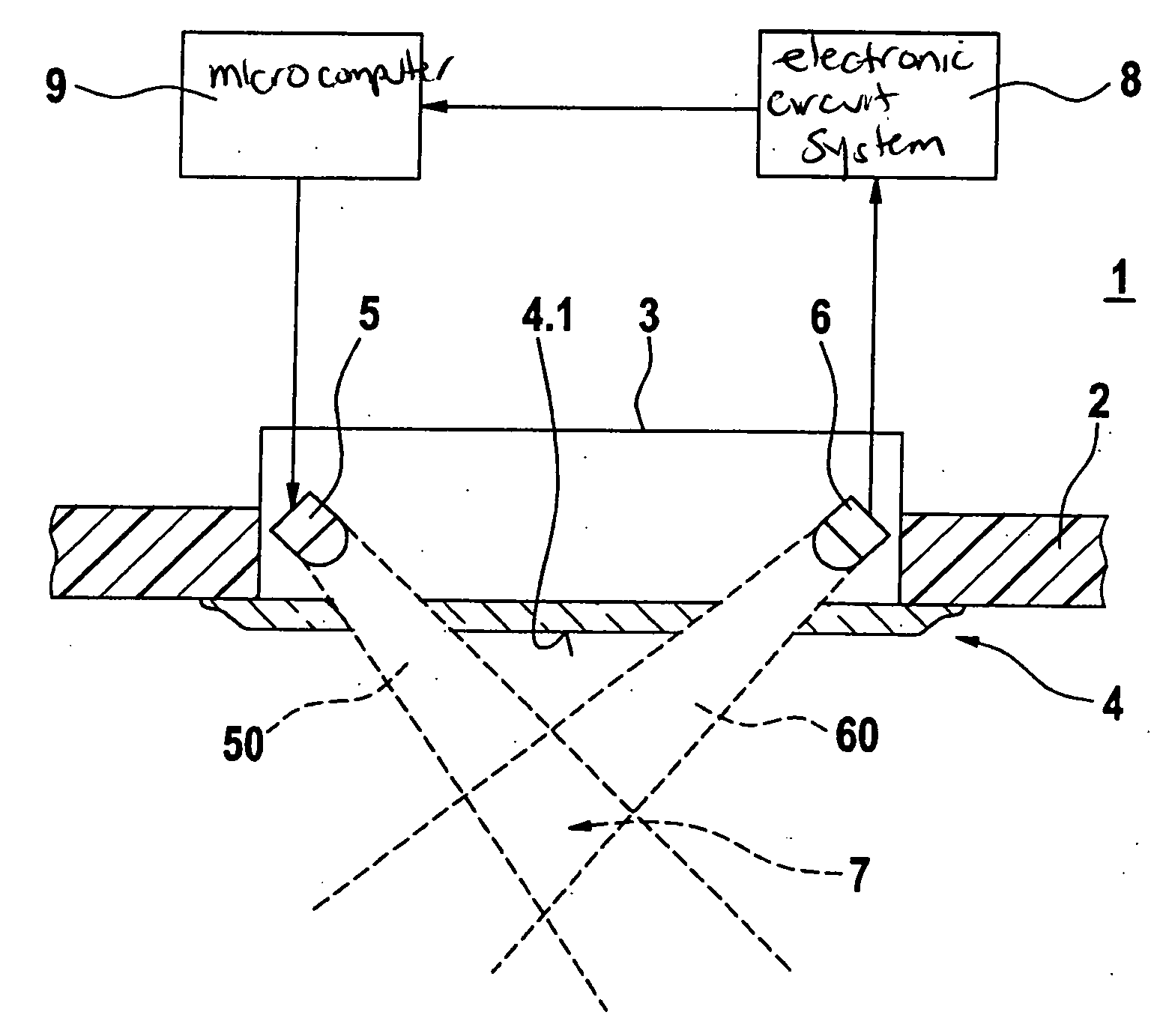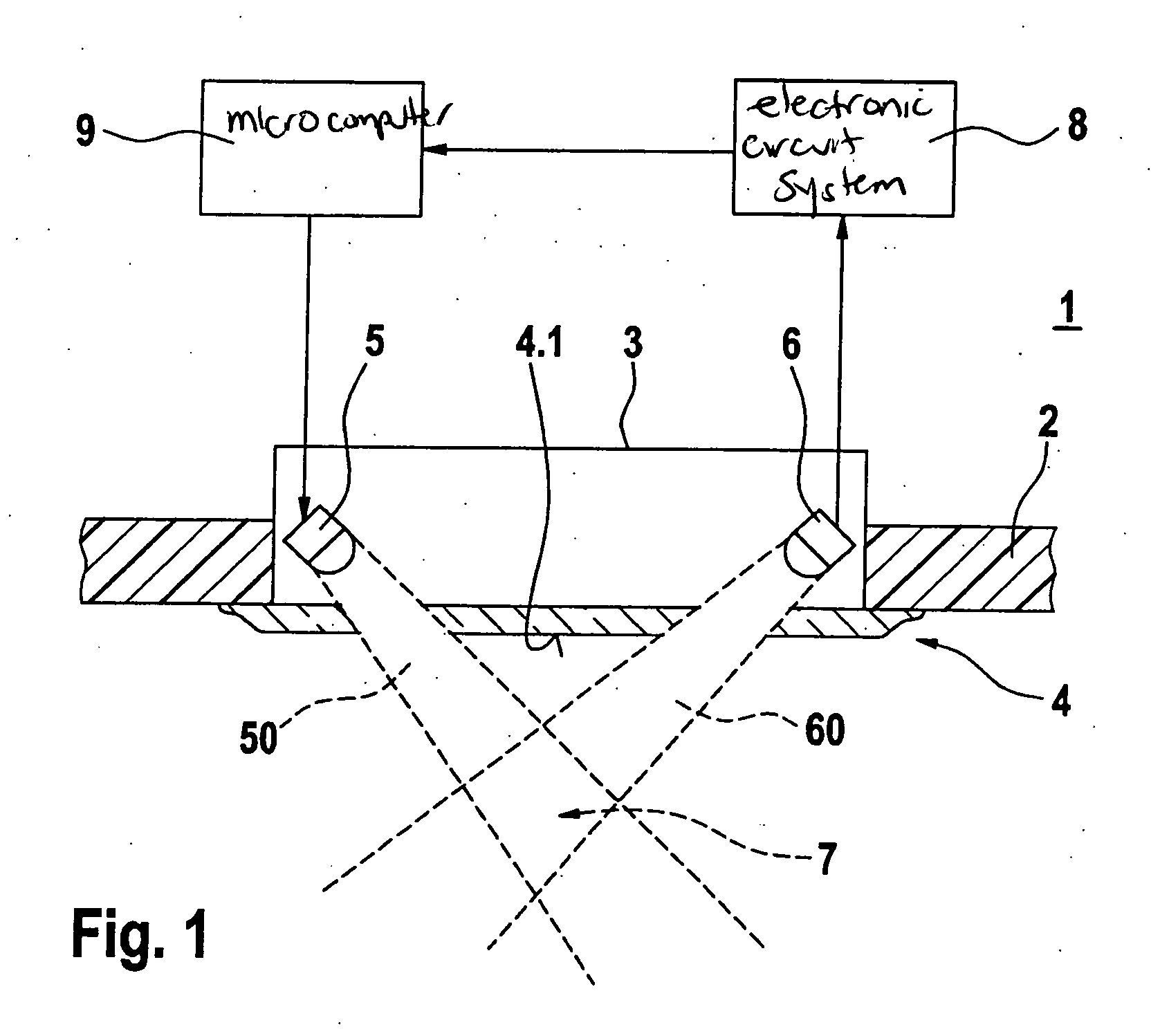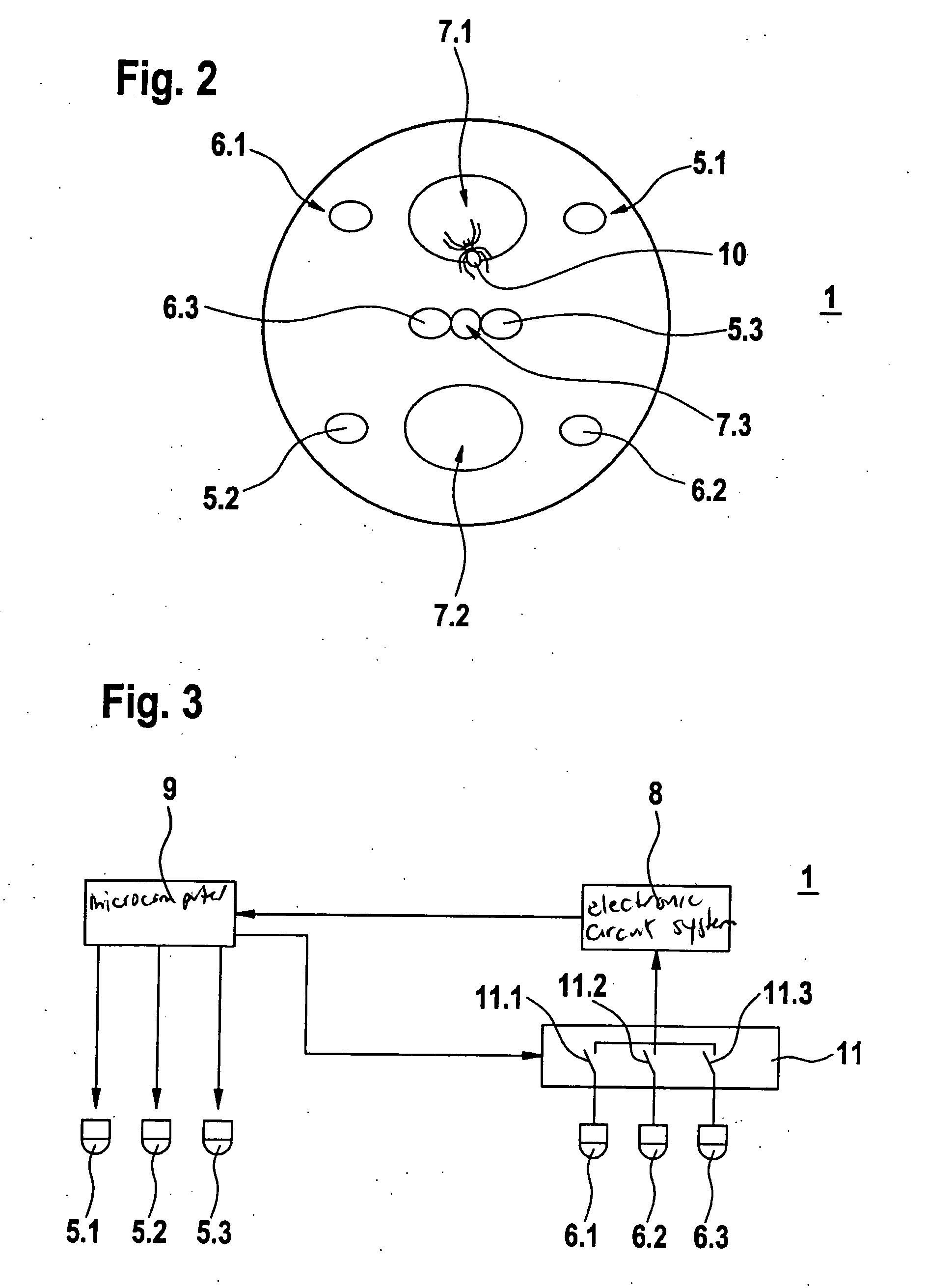Fire Detector
a fire detector and detector technology, applied in the field of fire detectors, can solve the problem of more expensive manufacture of fire detectors of this typ
- Summary
- Abstract
- Description
- Claims
- Application Information
AI Technical Summary
Benefits of technology
Problems solved by technology
Method used
Image
Examples
Embodiment Construction
[0013]FIG. 1 shows the schematic construction of a ceiling-flush fire detector 1 according to the scattered radiation principle. Fire detector 1 includes a housing 3, which is positioned ceiling-flush in a corresponding recess of ceiling 2 of a room. The housing is covered by a cover plate 4. A radiation transmitter 5 and a radiation receiver 6 are situated in housing 3 in such a way that no radiation may reach radiation receiver 6 directly from radiation transmitter 5. Rather, they are situated in such a way that their beam paths 50, 60 intersect outside cover plate 4. This intersection area is referred to as scattering volume 7. If scattering particles enter this scattering volume 7 from smoke generated by a fire source, for example, then the radiation emitted by radiation transmitter 5 is scattered on the smoke. A part of the scattered radiation thus reaches radiation receiver 6. The quantity of scattered radiation which is scattered by smoke particles to radiation receiver 6 at ...
PUM
 Login to View More
Login to View More Abstract
Description
Claims
Application Information
 Login to View More
Login to View More - R&D
- Intellectual Property
- Life Sciences
- Materials
- Tech Scout
- Unparalleled Data Quality
- Higher Quality Content
- 60% Fewer Hallucinations
Browse by: Latest US Patents, China's latest patents, Technical Efficacy Thesaurus, Application Domain, Technology Topic, Popular Technical Reports.
© 2025 PatSnap. All rights reserved.Legal|Privacy policy|Modern Slavery Act Transparency Statement|Sitemap|About US| Contact US: help@patsnap.com



